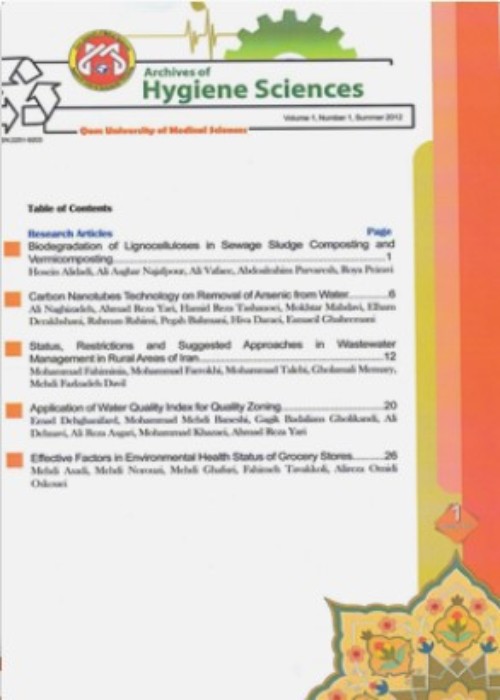Determination of Effective Parameters on Removal of Organic Materials from Pharmaceutical Industry Wastewater by Advanced Oxidation Process (H2O2/UV)
Author(s):
Abstract:
Background & Aims of the Study: Pharmaceutical wastewater is one of the major complex and toxic industrial effluents that contain little or no biodegradable organic matters.
Materials and Methods
In this study, H2O2/UV base advance oxidation process (AOP) was used to remove organic materials from pharmaceutical industry effluent. Experiments were conducted for the chemical oxygen demand (COD) removal using medium pressure mercury vapor UV lamp coupled with hydrogen peroxide (H2O2/UV).Results
Results indicated that the efficiency of COD removal depends on the concentration of initial H2O2, oxidation time and pH as well. The efficiency of COD removal in low H2O2 concentration was very low even in coupled with UV light, which can be attributed to the low hydroxyl radicals (OH) generation. In high concentration of H2O2 (500 mg/L) and optimum pH (pH=4), 87.496% of removal efficiency could be achieved during 70 minutes of oxidation time.Conclusions
For high concentration of H2O2 (500 mg/l) in pH 3 and 7, the maximum COD removal efficiency was 28.5% and 15.2% respectively, indicating significant roles of pH and H2O2 concentration in oxidation efficiency of H2O2/UV process in removing the COD.Keywords:
Language:
English
Published:
Archives of Hygiene Sciences, Volume:5 Issue: 2, Spring 2016
Pages:
69 to 74
https://magiran.com/p1534012


